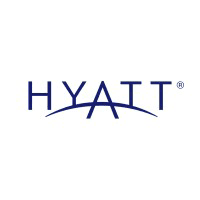
Knights Inn
How much does Knights Inn cost?
Initial Investment Range
$151,696 to $9,623,807
Franchise Fee
$26,300 to $63,895
The franchise offered in this disclosure document is for the right to operate a Knights Inn branded hotel.
Enjoy our partial free risk analysis below
Unlock the full risk analysis to access 9 more categories covering 100+ risks.
Knights Inn March 31, 2025 FDD Risk Analysis
Free FDD Library AI Analysis Date: July 16, 2025
DISCLAIMER: Not Legal Advice - For Informational Purposes Only. Consult With Qualified Franchise Professionals.
Franchisor Stability Risks
Start HereDisclosure of Franchisor's Financial Instability
High Risk
Explanation
The franchisor's parent, Red Lion Hotels Corporation (RLHC), discloses inconsistent financial performance, including net losses in two of the last three years and declining revenues in the most recent year. Cash reserves have also decreased substantially. This financial trend could impact the franchisor's ability to invest in the brand, provide necessary support, and fulfill its long-term obligations to you, creating significant risk for your investment's stability and growth potential.
Potential Mitigations
- An experienced franchise accountant must conduct a deep analysis of the provided financial statements, including cash flow trends and the reasons for revenue decline.
- It is crucial to discuss the parent company's financial health and strategic plans for improving profitability with your business advisor.
- Your attorney should review the parent guaranty in Exhibit G to understand the extent of financial backing for the franchisor's obligations.
High Franchisee Turnover
High Risk
Explanation
The franchisor, Sonesta RL Hotels Franchising Inc. (SRLHF), explicitly warns of a high turnover rate, stating that over 20% of its franchised hotels left the system over the last three years. FDD Item 20 data confirms this high churn rate through terminations, non-renewals, and other cessations. This is a critical red flag suggesting potential systemic problems with franchisee profitability, support, or overall satisfaction, which could directly affect your chances of success.
Potential Mitigations
- You must contact a significant number of former franchisees from the list in FDD Exhibit I to understand why they left the system.
- A thorough analysis of the Item 20 tables with your accountant is necessary to understand the specific trends in terminations versus non-renewals.
- Your attorney should help you frame precise questions for the franchisor regarding their plans to address this high level of franchisee turnover.
Rapid System Growth
Low Risk
Explanation
This risk was not identified. FDD Item 20 data indicates the franchise system has been shrinking, not undergoing rapid growth. While slow or negative growth presents its own challenges (covered under the "High Franchisee Turnover" risk), the specific risks associated with a franchisor's support systems being overwhelmed by rapid expansion do not appear to be present here.
Potential Mitigations
- Engage a business advisor to assess the franchisor's strategic plans for future growth and how it will be managed.
- When speaking with existing franchisees, it is wise to ask about their perception of the brand's market momentum and growth prospects.
- An accountant can help you evaluate how the system's size and growth trajectory may affect brand fund contributions and marketing power.
New/Unproven Franchise System
Low Risk
Explanation
This specific risk was not identified. The Knights Inn brand is established, and the franchisor, SRLHF, is part of a large, experienced hotel corporation. The risks associated with an unproven business model or an inexperienced, startup franchisor do not appear to be present, though you should still evaluate the performance of this specific brand within the larger company portfolio.
Potential Mitigations
- A discussion with your business advisor about the performance of this specific brand within the franchisor's larger portfolio is recommended.
- Seeking legal counsel to understand the history of the brand and its acquisition by the current franchisor can provide valuable context.
- When speaking to franchisees, ask about their experience since the parent company's acquisition and any changes in operations or support.
Possible Fad Business
Low Risk
Explanation
This risk was not identified. The franchise operates in the established hotel industry, which is not considered a fad. The business model is based on providing lodging services, a business with a long history of consumer demand. Your focus should be on the brand's competitiveness within its market segment rather than the long-term viability of the industry itself.
Potential Mitigations
- It is still important to have a business advisor help you assess the brand's specific competitive position within the economy hotel market.
- A real estate professional can assist in analyzing the long-term demand for this type of lodging in your specific proposed area.
- Consulting with your accountant on financial projections will help gauge the model's resilience to local economic shifts.
Inexperienced Management
Low Risk
Explanation
This risk was not identified. The management team detailed in FDD Item 2 appears to possess extensive experience in the hotel and franchising industries, largely through roles within the parent and affiliated companies. The risk of leadership lacking the necessary industry or franchising expertise does not seem to be a concern based on the disclosures.
Potential Mitigations
- A business advisor can help you research the professional reputations and track records of the key executives listed in Item 2.
- When speaking with franchisees, ask about their direct experiences and the quality of support they receive from the corporate leadership team.
- Your attorney can verify the disclosed executive roles and history through public records if desired.
Private Equity Ownership
Medium Risk
Explanation
While not owned by a traditional private equity firm, the franchisor's parent is part of a complex corporate structure involving The RMR Group, an asset management company, and publicly traded real estate trusts. This structure could create pressures to prioritize returns for shareholders of affiliated entities over the long-term health of franchisees. This may influence decisions on fees, required capital expenditures, and system support levels.
Potential Mitigations
- Engaging a business advisor to research the relationship between Sonesta, RLHC, and The RMR Group is critical to understanding potential conflicts.
- Your attorney should review the broad assignment rights in the Franchise Agreement, which could facilitate a sale of the system.
- Discuss with current franchisees whether they have perceived any changes in strategy or support related to the complex corporate ownership.
Non-Disclosure of Parent Company
Low Risk
Explanation
This risk was not identified. FDD Item 1 clearly discloses the parent companies, RLHC and Sonesta. Furthermore, FDD Item 21 provides the audited financial statements for the parent, RLHC, and FDD Exhibit G contains a Guaranty of Performance from RLHC. The franchisor appears to be transparent about its corporate structure and financial backing.
Potential Mitigations
- Your accountant should still carefully review the provided parent company financials in Exhibit F to assess its health.
- It is advisable for your attorney to review the specific terms of the parent Guaranty of Performance in Exhibit G.
- A business advisor can help you map out the corporate structure described in Item 1 to fully grasp the chain of ownership.
Predecessor History Issues
Medium Risk
Explanation
The franchisor and its parent have a complex history involving multiple name changes and the acquisition of numerous hotel brands from different companies, as detailed in Item 1. Item 3 reveals litigation stemming from these activities, including a significant settlement for tortious interference. This convoluted history could mean inheriting unresolved systemic issues or a corporate culture that leads to disputes, which may present a risk to you.
Potential Mitigations
- Your attorney should carefully trace the corporate history and the implications of the disclosed litigation related to past acquisitions.
- Speaking with long-term franchisees who have been through these acquisitions can provide invaluable insight into the system's evolution.
- A business advisor can help you assess if the integration of these various brands appears to be well-managed.
Pattern of Litigation
High Risk
Explanation
FDD Item 3 reveals a significant pattern of litigation involving the franchisor, its parent, and its predecessors. This includes numerous lawsuits brought by the franchisor against franchisees to collect fees, as well as counterclaims from franchisees alleging misrepresentation and breach of contract. This litigious history suggests a potentially contentious relationship with franchisees and a willingness to resort to legal action to resolve disputes, which could be a risk for you.
Potential Mitigations
- It is critical for your attorney to review the nature and outcomes of all lawsuits disclosed in Item 3 to identify recurring problems.
- You should consider the high volume of litigation as a significant red flag indicating potential issues in the franchise relationship.
- Discuss the litigation history with the franchisor and, if possible, some of the franchisees involved, with guidance from your legal counsel.
Disclosure & Representation Risks
Example Risk: Franchisee Financial Obligations
Blue Risk
Explanation
This risk involves the financial obligations that a franchisee must meet, including initial fees, ongoing royalties, and other required payments. Understanding these obligations is crucial for long-term success.
Potential Mitigations
- Carefully review the Franchise Disclosure Document (FDD) and consult with a franchise attorney to fully understand all financial commitments before signing.
- Conduct regular risk assessments
- Implement monitoring and reporting systems
Unlock Full Risk Analysis
Purchase the complete risk review to see all 102 risks across all 10 categories.
Financial & Fee Risks
Example Risk: Franchisee Financial Obligations
Blue Risk
Explanation
This risk involves the financial obligations that a franchisee must meet, including initial fees, ongoing royalties, and other required payments. Understanding these obligations is crucial for long-term success.
Potential Mitigations
- Carefully review the Franchise Disclosure Document (FDD) and consult with a franchise attorney to fully understand all financial commitments before signing.
- Conduct regular risk assessments
- Implement monitoring and reporting systems
Unlock Full Risk Analysis
Purchase the complete risk review to see all 102 risks across all 10 categories.
Legal & Contract Risks
Example Risk: Franchisee Financial Obligations
Blue Risk
Explanation
This risk involves the financial obligations that a franchisee must meet, including initial fees, ongoing royalties, and other required payments. Understanding these obligations is crucial for long-term success.
Potential Mitigations
- Carefully review the Franchise Disclosure Document (FDD) and consult with a franchise attorney to fully understand all financial commitments before signing.
- Conduct regular risk assessments
- Implement monitoring and reporting systems
Unlock Full Risk Analysis
Purchase the complete risk review to see all 102 risks across all 10 categories.
Territory & Competition Risks
Example Risk: Franchisee Financial Obligations
Blue Risk
Explanation
This risk involves the financial obligations that a franchisee must meet, including initial fees, ongoing royalties, and other required payments. Understanding these obligations is crucial for long-term success.
Potential Mitigations
- Carefully review the Franchise Disclosure Document (FDD) and consult with a franchise attorney to fully understand all financial commitments before signing.
- Conduct regular risk assessments
- Implement monitoring and reporting systems
Unlock Full Risk Analysis
Purchase the complete risk review to see all 102 risks across all 10 categories.
Regulatory & Compliance Risks
Example Risk: Franchisee Financial Obligations
Blue Risk
Explanation
This risk involves the financial obligations that a franchisee must meet, including initial fees, ongoing royalties, and other required payments. Understanding these obligations is crucial for long-term success.
Potential Mitigations
- Carefully review the Franchise Disclosure Document (FDD) and consult with a franchise attorney to fully understand all financial commitments before signing.
- Conduct regular risk assessments
- Implement monitoring and reporting systems
Unlock Full Risk Analysis
Purchase the complete risk review to see all 102 risks across all 10 categories.
Franchisor Support Risks
Example Risk: Franchisee Financial Obligations
Blue Risk
Explanation
This risk involves the financial obligations that a franchisee must meet, including initial fees, ongoing royalties, and other required payments. Understanding these obligations is crucial for long-term success.
Potential Mitigations
- Carefully review the Franchise Disclosure Document (FDD) and consult with a franchise attorney to fully understand all financial commitments before signing.
- Conduct regular risk assessments
- Implement monitoring and reporting systems
Unlock Full Risk Analysis
Purchase the complete risk review to see all 102 risks across all 10 categories.
Operational Control Risks
Example Risk: Franchisee Financial Obligations
Blue Risk
Explanation
This risk involves the financial obligations that a franchisee must meet, including initial fees, ongoing royalties, and other required payments. Understanding these obligations is crucial for long-term success.
Potential Mitigations
- Carefully review the Franchise Disclosure Document (FDD) and consult with a franchise attorney to fully understand all financial commitments before signing.
- Conduct regular risk assessments
- Implement monitoring and reporting systems
Unlock Full Risk Analysis
Purchase the complete risk review to see all 102 risks across all 10 categories.
Term & Exit Risks
Example Risk: Franchisee Financial Obligations
Blue Risk
Explanation
This risk involves the financial obligations that a franchisee must meet, including initial fees, ongoing royalties, and other required payments. Understanding these obligations is crucial for long-term success.
Potential Mitigations
- Carefully review the Franchise Disclosure Document (FDD) and consult with a franchise attorney to fully understand all financial commitments before signing.
- Conduct regular risk assessments
- Implement monitoring and reporting systems
Unlock Full Risk Analysis
Purchase the complete risk review to see all 102 risks across all 10 categories.
Miscellaneous Risks
Example Risk: Franchisee Financial Obligations
Blue Risk
Explanation
This risk involves the financial obligations that a franchisee must meet, including initial fees, ongoing royalties, and other required payments. Understanding these obligations is crucial for long-term success.
Potential Mitigations
- Carefully review the Franchise Disclosure Document (FDD) and consult with a franchise attorney to fully understand all financial commitments before signing.
- Conduct regular risk assessments
- Implement monitoring and reporting systems
Unlock Full Risk Analysis
Purchase the complete risk review to see all 102 risks across all 10 categories.











